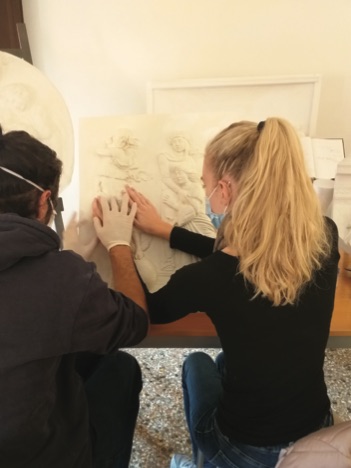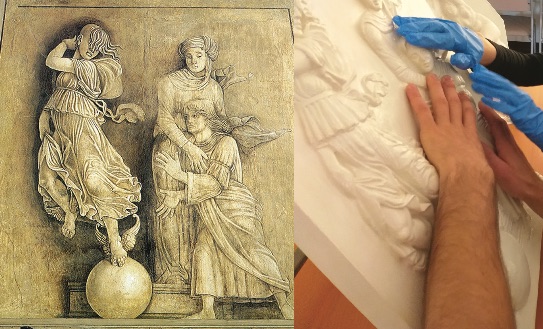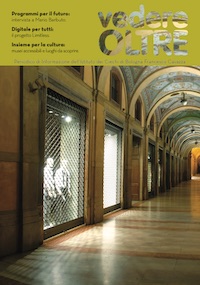
The ongoing sanitary emergency, resulting from the spread of COVID-19, even in museum environments, has led to adaptations that could not lead to a lengthy interruption of activities, or to the premature reopening to the public with an ensuing risk of contagion. The expertise of museums, and in general of places of culture, has manifested itself in the strength of the operational constancy, waiting for a return to a new normality. It is undeniable that tactile museums have suffered greatly from the health emergency because of the close contact between guide and visitor, which in times of pandemic has been rightly discouraged. The solutions to reduce to a minimum the risk of gathering and contagion, in sometimes small spaces, required an alternating presence, and a personalized approach, which went well beyond the already studied individual guides provided in tactile museums, where the relationship with the public is not based so much on the number of visits, but rather on their quality.

In regard to digital applications, audio descriptions represent a valid alternative to the human guide and guarantee the possibility of achieving precious autonomy in the relationship with the work of art. The educational service offered by a living guide, understandingly interactive, is still today an irreplaceable value. This is why without effective contact, without a body, all learning is technically effective but realistically incomplete. Since we are more tempted to underline the limits of an unfavourable circumstance than favourable potential adaptations, the Anteros tactile museum would like to send a message of hope. In this year 2020 marked by the coronavirus, even in our museum as in other national venues, we carried out important work of maintenance to the collection. In view of the reopening of museums, our laboratories have been testing and applying sanitizable coatings on bas-reliefs dedicated to tactile experiences, which, given the pandemic, require specific cleaning procedures. Targeted observations were carried out on the tactile perceptual behaviours of blind visitors and on the strengths and weaknesses of the surfaces that had been given this treatment. Significant data was collected on the degree of acuity of tactile sensations, and on the importance of caring for the evidence of forms and the eloquence of the descriptive contents. Bas-relief replicas that translate pictorial values into plastic, and artistic all-round reproductions of sculptures in relief do not pliantly replicate an original artifact: they reproduce and interpret it, when necessary, and this also applies in cases of 3D print finishes. These replicas are different from serial productions in terms of aesthetic quality, because they are unique pieces filled with the life that only the skilled hand of the sculptor gives to the alabaster plaster or resin restitution.
The interpretation of a sky, a sea, or a fabric is a challenge to the capacity for differentiation in the mind of a blind person. It is always in the power of imagination that the true strength of vision dwells, and it is in the function of the word, in association with the iconic gesture, that we attribute the task of describing even the most intangible phenomena. There are no definitive interpretations, only perfectible ones, and therefore every cultural mediation is an adaptation to circumstances, in search of a balance between senses and intellect that will never be repeated equally. At Anteros, despite the respect of social distancing and the various measures of ministerial decrees, we continued activities of technical and scientific advice and teaching on-site and online. The dissemination of content on social networks and the training of the museum's new generation of blind guides has been enhanced. In the future, these guides will have the task of methodically applying a procedure of appropriation and restitution of artistic images, necessary to the various forms of educational, social and professional inclusion of the visually impaired. The most widely read work in this time was the bas-relief translation of the fresco Occasio e Poenitentia, School of Andrea Mantegna. The iconographic theme represented speaks of a lost opportunity and a favourable moment, placing us before the theme of destiny and conscious free will.





.png)